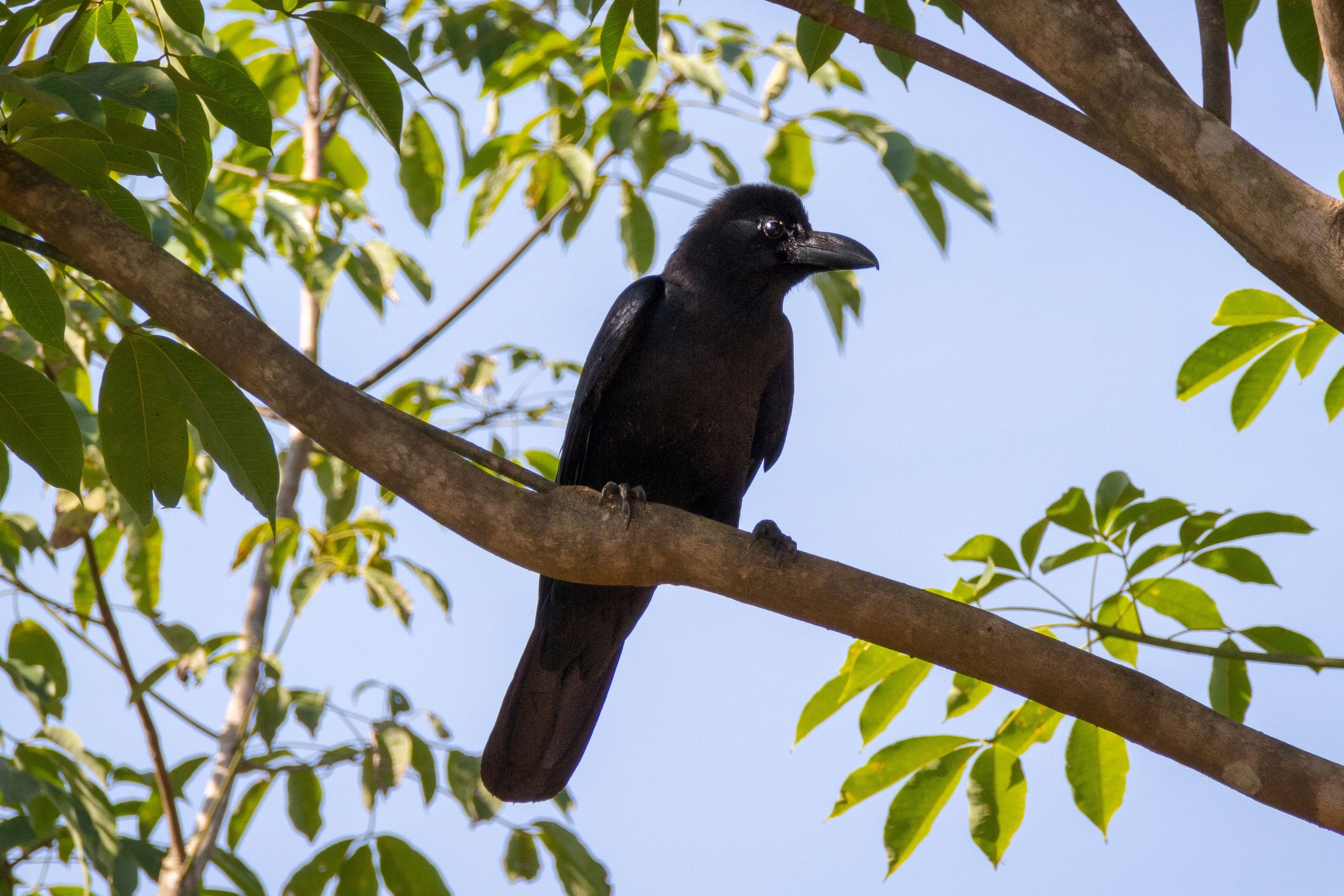New Caledonian crow
(Corvus moneduloides)

Description
The New Caledonian crow (Corvus moneduloides) is a medium-sized member of the family Corvidae, native to New Caledonia. The bird is often referred to as the 'qua-qua' due to its distinctive call. It eats a wide range of food, including many types of invertebrates, eggs, nestlings, small mammals, snails, nuts and seeds. The New Caledonian crow sometimes captures grubs in nooks or crevices by poking a twig at the grub to agitate it into biting the twig, which the crow then withdraws with the grub still attached. This method of feeding indicates the New Caledonian crow is capable of tool use. They are also able to make hooks. This species is also capable of solving a number of sophisticated cognitive tests which suggest that it is particularly intelligent. As a result of these findings, the New Caledonian crow has become a model species for scientists trying to understand the impact of tool use and manufacture on the evolution of intelligence. The New Caledonian crow is a moderate-sized crow, (40 cm in length), similar in size to the house crow, but less slender-looking. The bird has an all-black appearance with a rich gloss to its feathers of purple, dark blue and some green in good light. The beak, feet and legs are all black. The beak is moderate in size but is unusual in that the tip of the lower mandible is angled upwards, making it somewhat chisel-like in profile. It has been suggested that this beak morphology evolved due to the selective pressure of needing to hold a tool straight. The vocalization is described as a soft "waa-waa" or "wak-wak", and sometimes as a hoarse "qua-qua" or "waaaark". Across New Caledonia, the bird is often referred to as a 'qua-qua' due to its distinctive call. The bird is endemic to the islands of New Caledonia in the Pacific, living in primary forest. It inhabits only the main island, Grande Terre, and one of the Loyalty Islands, Maré Island. The New Caledonian crow eats a wide range of food, including many types of insects and other invertebrates (some caught in flight with great agility, including night-flying insects which it catches at dusk), eggs and nestlings, small mammals, snails (which it drops from a height onto hard stones), and various nuts and seeds. This species is known for using plant material to create stick and leaf tools to capture prey hiding in cracks and crevices. These tools can have naturally occurring barbs, or are sometimes fashioned into hooks by the birds.
Taxonomic tree:







